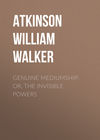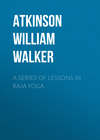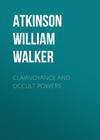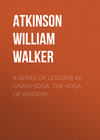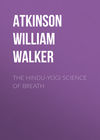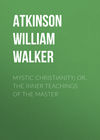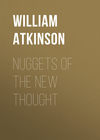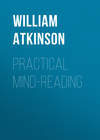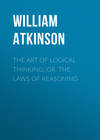Kitabı oku: «Memory: How to Develop, Train, and Use It», sayfa 7
CHAPTER XIV
HOW TO REMEMBER NUMBERS
The faculty of Number – that is the faculty of knowing, recognizing and remembering figures in the abstract and in their relation to each other, differs very materially among different individuals. To some, figures and numbers are apprehended and remembered with ease, while to others they possess no interest, attraction or affinity, and consequently are not apt to be remembered. It is generally admitted by the best authorities that the memorizing of dates, figures, numbers, etc., is the most difficult of any of the phases of memory. But all agree that the faculty may be developed by practice and interest. There have been instances of persons having this faculty of the mind developed to a degree almost incredible; and other instances of persons having started with an aversion to figures and then developing an interest which resulted in their acquiring a remarkable degree of proficiency along these lines.
Many of the celebrated mathematicians and astronomers developed wonderful memories for figures. Herschel is said to have been able to remember all the details of intricate calculations in his astronomical computations, even to the figures of the fractions. It is said that he was able to perform the most intricate calculations mentally, without the use of pen or pencil, and then dictated to his assistant the entire details of the process, including the final results. Tycho Brahe, the astronomer, also possessed a similar memory. It is said that he rebelled at being compelled to refer to the printed tables of square roots and cube roots, and set to work to memorize the entire set of tables, which almost incredible task he accomplished in a half day – this required the memorizing of over 75,000 figures, and their relations to each other. Euler the mathematician became blind in his old age, and being unable to refer to his tables, memorized them. It is said that he was able to repeat from recollection the first six powers of all the numbers from one to one hundred.
Wallis the mathematician was a prodigy in this respect. He is reported to have been able to mentally extract the square root of a number to forty decimal places, and on one occasion mentally extracted the cube root of a number consisting of thirty figures. Dase is said to have mentally multiplied two numbers of one hundred figures each. A youth named Mangiamele was able to perform the most remarkable feats in mental arithmetic. The reports show that upon a celebrated test before members of the French Academy of Sciences he was able to extract the cube root of 3,796,416 in thirty seconds; and the tenth root of 282,475,289 in three minutes. He also immediately solved the following question put to him by Arago: "What number has the following proportion: That if five times the number be subtracted from the cube plus five times the square of the number, and nine times the square of the number be subtracted from that result, the remainder will be 0?" The answer, "5" was given immediately, without putting down a figure on paper or board. It is related that a cashier of a Chicago bank was able to mentally restore the accounts of the bank, which had been destroyed in the great fire in that city, and his account which was accepted by the bank and the depositors, was found to agree perfectly with the other memoranda in the case, the work performed by him being solely the work of his memory.
Bidder was able to tell instantly the number of farthings in the sum of £868, 42s, 121d. Buxton mentally calculated the number of cubical eighths of an inch there were in a quadrangular mass 23,145,789 yards long, 2,642,732 yards wide and 54,965 yards in thickness. He also figured out mentally, the dimensions of an irregular estate of about a thousand acres, giving the contents in acres and perches, then reducing them to square inches, and then reducing them to square hair-breadths, estimating 2,304 to the square inch, 48 to each side. The mathematical prodigy, Zerah Colburn, was perhaps the most remarkable of any of these remarkable people. When a mere child, he began to develop the most amazing qualities of mind regarding figures. He was able to instantly make the mental calculation of the exact number of seconds or minutes there was in a given time. On one occasion he calculated the number of minutes and seconds contained in forty-eight years, the answer: "25,228,800 minutes, and 1,513,728,000 seconds," being given almost instantaneously. He could instantly multiply any number of one to three figures, by another number consisting of the same number of figures; the factors of any number consisting of six or seven figures; the square, and cube roots, and the prime numbers of any numbers given him. He mentally raised the number 8, progressively, to its sixteenth power, the result being 281,474,976,710,656; and gave the square root of 106,929, which was 5. He mentally extracted the cube root of 268,336,125; and the squares of 244,999,755 and 1,224,998,755. In five seconds he calculated the cube root of 413,993,348,677. He found the factors of 4,294,967,297, which had previously been considered to be a prime number. He mentally calculated the square of 999,999, which is 999,998,000,001 and then multiplied that number by 49, and the product by the same number, and the whole by 25 – the latter as extra measure.
The great difficulty in remembering numbers, to the majority of persons, is the fact that numbers "do not mean anything to them" – that is, that numbers are thought of only in their abstract phase and nature, and are consequently far more difficult to remember than are impressions received from the senses of sight or sound. The remedy, however, becomes apparent when we recognize the source of the difficulty. The remedy is: Make the number the subject of sound and sight impressions. Attach the abstract idea of the numbers to the sense of impressions of sight or sound, or both, according to which are the best developed in your particular case. It may be difficult for you to remember "1848" as an abstract thing, but comparatively easy for you to remember the sound of "eighteen forty-eight," or the shape and appearance of "1848." If you will repeat a number to yourself, so that you grasp the sound impression of it, or else visualize it so that you can remember having seen it – then you will be far more apt to remember it than if you merely think of it without reference to sound or form. You may forget that the number of a certain store or house is 3948, but you may easily remember the sound of the spoken words "thirty-nine forty-eight," or the form of "3948" as it appeared to your sight on the door of the place. In the latter case, you associate the number with the door and when you visualize the door you visualize the number.
Kay, speaking of visualization, or the reproduction of mental images of things to be remembered, says: "Those who have been distinguished for their power to carry out long and intricate processes of mental calculation owe it to the same cause." Taine says: "Children accustomed to calculate in their heads write mentally with chalk on an imaginary board the figures in question, then all their partial operations, then the final sum, so that they see internally the different lines of white figures with which they are concerned. Young Colburn, who had never been at school and did not know how to read or write, said that, when making his calculations 'he saw them clearly before him.' Another said that he 'saw the numbers he was working with as if they had been written on a slate.'" Bidder said: "If I perform a sum mentally, it always proceeds in a visible form in my mind; indeed, I can conceive of no other way possible of doing mental arithmetic."
We have known office boys who could never remember the number of an address until it were distinctly repeated to them several times – then they memorized the sound and never forget it. Others forget the sounds, or failed to register them in the mind, but after once seeing the number on the door of an office or store, could repeat it at a moments notice, saying that they mentally "could see the figures on the door." You will find by a little questioning that the majority of people remember figures or numbers in this way, and that very few can remember them as abstract things. For that matter it is difficult for the majority of persons to even think of a number, abstractly. Try it yourself, and ascertain whether you do not remember the number as either a sound of words, or else as the mental image or visualization of the form of the figures. And, by the way, which ever it happens to be, sight or sound, that particular kind of remembrance is your best way of remembering numbers, and consequently gives you the lines upon which you should proceed to develop this phase of memory.
The law of Association may be used advantageously in memorizing numbers; for instance we know of a person who remembered the number 186,000 (the number of miles per second traveled by light-waves in the ether) by associating it with the number of his father's former place of business, "186." Another remembered his telephone number "1876" by recalling the date of the Declaration of Independence. Another, the number of States in the Union, by associating it with the last two figures of the number of his place of business. But by far the better way to memorize dates, special numbers connected with events, etc., is to visualize the picture of the event with the picture of the date or number, thus combining the two things into a mental picture, the association of which will be preserved when the picture is recalled. Verse of doggerel, such as "In fourteen hundred and ninety-two, Columbus sailed the ocean blue;" or "In eighteen hundred and sixty-one, our country's Civil war begun," etc., have their places and uses. But it is far better to cultivate the "sight or sound" of a number, than to depend upon cumbersome associative methods based on artificial links and pegs.
Finally, as we have said in the preceding chapters, before one can develop a good memory of a subject, he must first cultivate an interest in that subject. Therefore, if you will keep your interest in figures alive by working out a few problems in mathematics, once in a while, you will find that figures will begin to have a new interest for you. A little elementary arithmetic, used with interest, will do more to start you on the road to "How to Remember Numbers" than a dozen text books on the subject. In memory, the three rules are: "Interest, Attention and Exercise" – and the last is the most important, for without it the others fail. You will be surprised to see how many interesting things there are in figures, as you proceed. The task of going over the elementary arithmetic will not be nearly so "dry" as when you were a child. You will uncover all sorts of "queer" things in relation to numbers. Just as a "sample" let us call your attention to a few:
Take the figure "1" and place behind it a number of "naughts," thus: 1,000,000,000,000, – as many "naughts" or ciphers as you wish. Then divide the number by the figure "7." You will find that the result is always this "142,857" then another "142,857," and so on to infinity, if you wish to carry the calculation that far. These six figures will be repeated over and over again. Then multiply this "142,857" by the figure "7," and your product will be all nines. Then take any number, and set it down, placing beneath it a reversal of itself and subtract the latter from the former, thus:
117,761,909
90,916,771
26,845,138
and you will find that the result will always reduce to nine, and is always a multiple of 9. Take any number composed of two or more figures, and subtract from it the added sum of its separate figures, and the result is always a multiple of 9, thus:
184
1 + 8 + 4 = 13
171 ÷ 9 = 19
We mention these familiar examples merely to remind you that there is much more of interest in mere figures than many would suppose. If you can arouse your interest in them, then you will be well started on the road to the memorizing of numbers. Let figures and numbers "mean something" to you, and the rest will be merely a matter of detail.
CHAPTER XV
HOW TO REMEMBER MUSIC
Like all of the other faculties of the mind, that of music or tune is manifested in varying degrees by different individuals. To some music seems to be almost instinctively grasped, while to others it is acquired only by great effort and much labor. To some harmony is natural, and inharmony a matter of repulsion, while others fail to recognize the difference between the two except in extreme cases. Some seem to be the very soul of music, while others have no conception of what the soul of music may be. Then there is manifested the different phases of the knowledge of music. Some play correctly by ear, but are clumsy and inefficient when it comes to playing by note. Others play very correctly in a mechanical manner, but fail to retain the memory of music which they have heard. It is indeed a good musician who combines within himself, or herself, both of the two last mentioned faculties – the ear perception of music and the ability to execute correctly from notes.
There are many cases of record in which extraordinary powers of memory of music have been manifested. Fuller relates the following instances of this particular phase of memory: Carolan, the greatest of Irish bards, once met a noted musician and challenged him to a test of their respective musical abilities. The defi was accepted and Carolan's rival played on his violin one of Vivaldi's most difficult concertos. On the conclusion of the performance, Carolan, who had never heard the piece before, took his harp and played the concerto through from beginning to end without making a single error. His rival thereupon yielded the palm, thoroughly satisfied of Carolan's superiority, as well he might be. Beethoven could retain in his memory any musical composition, however complex, that he had listened to, and could reproduce most of it. He could play from memory every one of the compositions in Bach's 'Well Tempered Clavichord,' there being forty-eight preludes and the same number of fugues which in intricacy of movement and difficulty of execution are almost unexampled, as each of these compositions is written in the most abstruse style of counterpoint.
"Mozart, at four years of age, could remember note for note, elaborate solos in concertos which he had heard; he could learn a minuet in half an hour, and even composed short pieces at that early age. At six he was able to compose without the aid of an instrument, and continued to advance rapidly in musical memory and knowledge. When fourteen years old he went to Rome in Holy Week. At the Sistine Chapel was performed each day, Allegri's 'Miserere,' the score of which Mozart wished to obtain, but he learned that no copies were allowed to be made. He listened attentively to the performance, at the conclusion of which he wrote the whole score from memory without an error. Another time, Mozart was engaged to contribute an original composition to be performed by a noted violinist and himself at Vienna before the Emperor Joseph. On arriving at the appointed place Mozart discovered that he had forgotten to bring his part. Nothing dismayed, he placed a blank sheet of paper before him, and played his part through from memory without a mistake. When the opera of 'Don Giovanni' was first performed there was no time to copy the score for the harpsichord, but Mozart was equal to the occasion; he conducted the entire opera and played the harpsichord accompaniment to the songs and choruses without a note before him. There are many well-attested instances of Mendelssohn's remarkable musical memory. He once gave a grand concert in London, at which his Overture to 'Midsummer Night's Dream' was produced. There was only one copy of the full score, which was taken charge of by the organist of St. Paul's Cathedral, who unfortunately left it in a hackney coach – whereupon Mendelssohn wrote out another score from memory, without an error. At another time, when about to direct a public performance of Bach's 'Passion Music,' he found on mounting the conductor's platform that instead of the score of the work to be performed, that of another composition had been brought by mistake. Without hesitation Mendelssohn successfully conducted this complicated work from memory, automatically turning over leaf after leaf of the score before him as the performance progressed, so that no feeling of uneasiness might enter the minds of the orchestra and singers. Gottschalk, it is said, could play from memory several thousand compositions, including many of the works of Bach. The noted conductor, Vianesi, rarely has the score before him in conducting an opera, knowing every note of many operas from memory."
It will be seen that two phases of memory must enter into the "memory of music" – the memory of tune and the memory of the notes. The memory of tune of course falls into the class of ear-impressions, and what has been said regarding them is also applicable to this case. The memory of notes falls into the classification of eye-impressions, and the rules of this class of memory applies in this case. As to the cultivation of the memory of tune, the principle advice to be given is that the student take an active interest in all that pertains to the sound of music, and also takes every opportunity for listening to good music, and endeavoring to reproduce it in the imagination or memory. Endeavor to enter into the spirit of the music until it becomes a part of yourself. Rest not content with merely hearing it, but lend yourself to a feeling of its meaning. The more the music "means to you," the more easily will you remember it. The plan followed by many students, particularly those of vocal music, is to have a few bars of a piece played over to them several times, until they are able to hum it correctly; then a few more are added; and then a few more and so on. Each addition must be reviewed in connection with that which was learned before, so that the chain of association may be kept unbroken. The principle is the same as the child learning his A-B-C – he remembers "B" because it follows "A." By this constant addition of "just a little bit more," accompanied by frequent reviews, long and difficult pieces may be memorized.
The memory of notes may be developed by the method above named – the method of learning a few bars well, and then adding a few more, and frequently reviewing as far as you have learned, forging the links of association as you go along, by frequent practice. The method being entirely that of eye-impression and subject to its rules, you must observe the idea of visualization – that is learning each bar until you can see it "in your mind's eye" as you proceed. But in this, as in many other eye-impressions, you will find that you will be greatly aided by your memory of the sound of the notes, in addition to their appearance. Try to associate the two as much as possible, so that when you see a note, you will hear the sound of it, and when you hear a note sounded, you will see it as it appears on the score. This combining of the impressions of both sight and sound will give you the benefit of the double sense impression, which results in doubling your memory efficiency. In addition to visualizing the notes themselves, the student should add the appearance of the various symbols denoting the key, the time, the movement, expression, etc., so that he may hum the air from the visualized notes, with expression and with correct interpretation. Changes of key, time or movement should be carefully noted in the memorization of the notes. And above everything else, memorize the feeling of that particular portion of the score, that you may not only see and hear, but also feel that which you are recalling.
We would advise the student to practice memorizing simple songs at first, for various reasons. One of these reasons is that these songs lend themselves readily to memorizing, and the chain of easy association is usually maintained throughout.
In this phase of memory, as in all others, we add the advice to: Take interest; bestow Attention; and Practice and Exercise as often as possible. You may have tired of these words – but they constitute the main principles of the development of a retentive memory. Things must be impressed upon the memory, before they may be recalled. This should be remembered in every consideration of the subject.

